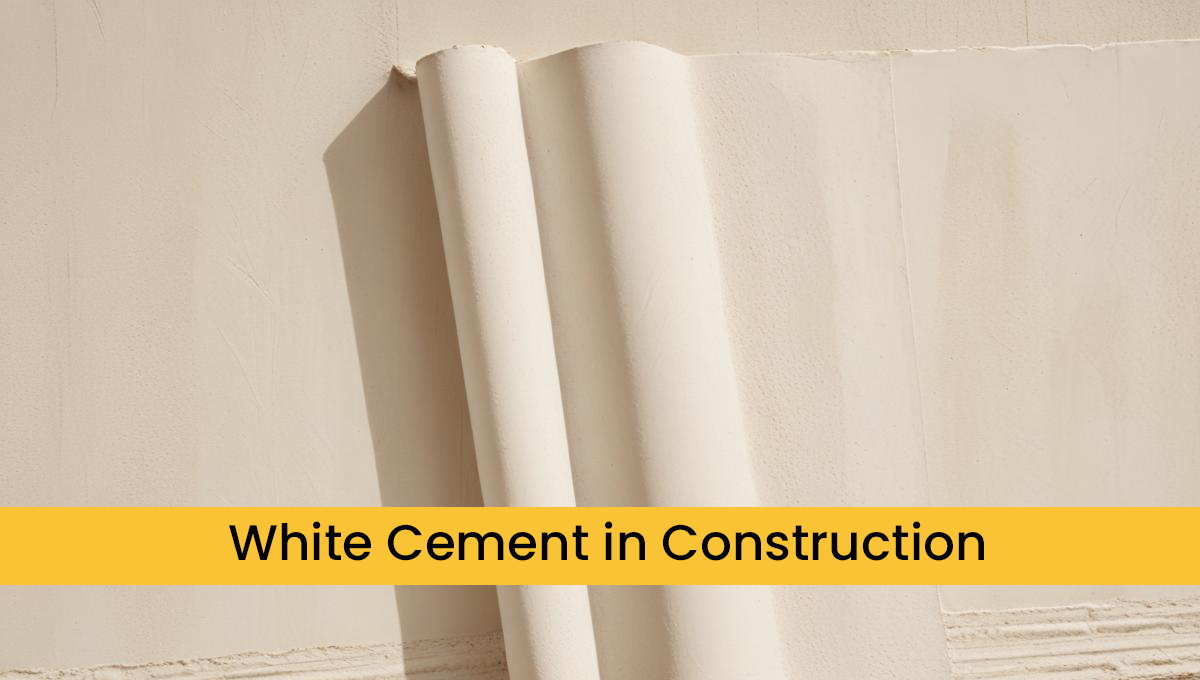In the world of architecture and design, materials play a crucial role in shaping the aesthetics and functionality of structures. One material that has significantly impacted modern design is “white cement.” Its unique properties and versatility make it a favourite among architects and builders alike. In this blog, we’ll explore why white cement is a foundational element in contemporary architecture and design, and how it can transform your projects into works of art.
The Unique Properties of White Cement
When discussing white cement, its most striking feature is its colour. Unlike traditional gray cement, white cement provides a clean, bright finish that is highly desirable in many architectural projects. But what exactly makes white cement so special?
1. Pure Color: White cement is made from raw materials with a low iron and manganese content. This gives it its distinct colour and allows for a wide range of aesthetic finishes.
2. Reflectivity: Its high reflectivity helps in creating brighter interiors and exteriors, which can significantly reduce the need for artificial lighting.
3. Durability: Despite its elegant appearance, white cement is incredibly durable and resilient, making it suitable for both indoor and outdoor use.
4. Versatility: Whether used in concrete, plaster or as a decorative element, white cement’s versatility allows for a multitude of design possibilities.
These properties make white cement an excellent choice for both residential and commercial projects, providing a blend of beauty and practicality.
Applications in Modern Architecture
White cement is not just about aesthetics; it’s about how those aesthetics can be applied in practical ways. Let’s delve into some of the most common uses of this cement in contemporary architecture.
Exterior Facades
White cement is often used in the construction of exterior facades. Its bright, clean appearance can give buildings a modern, sophisticated look. Here are some advantages:
– Thermal Efficiency: Due to its reflective properties, white cement can help keep buildings cooler, reducing the need for air conditioning.
– Weather Resistance: It offers excellent resistance to weathering, ensuring that structures maintain their pristine appearance for longer periods.
Interior Design
The use of white cement in interior design is another area where its benefits shine through.
– Bright and Airy Spaces: Using white cement in interiors can help create spaces that feel open and airy. This is particularly useful in urban environments where natural light might be limited.
– Versatile Finishes: White cement can be polished to a high gloss or left matte, depending on the desired aesthetic.
Explore White Cement Products in MaterialTown. Click here.
Sculptural Elements and Decorative Features
White cement’s fine texture and workability make it an ideal medium for creating detailed sculptural elements and decorative features.
– Intricate Designs: From intricate cornices and mouldings to modern art installations, white cement allows for the creation of detailed and elegant designs.
– Garden Elements: White cement is also popular in landscaping, where it can be used to create beautiful garden sculptures and water features.
Sustainability and Environmental Impact
In today’s construction industry, sustainability is a key consideration. White cement contributes to this in several ways:
– Energy Efficiency: As mentioned earlier, its reflective properties can reduce the need for artificial lighting and cooling.
– Longevity: Structures built with this cement often require less maintenance and have a longer lifespan, reducing the need for repairs and replacements.
– Recyclability: White cement structures can often be recycled, contributing to more sustainable building practices.
Choosing the Right White Cement for Your Project
Not all white cement is created equal. When selecting white cement for your project, consider the following factors:
– Quality of Raw Materials: High-quality raw materials will result in a better end product. Look for manufacturers with a reputation for using the best raw materials.
– Consistency: Ensure the cement you choose offers consistent colour and performance.
– Support and Service: Good technical support and service from MaterialTown can make a big difference, especially if you’re using it for the first time.
Conclusion
White cement is more than just a building material; it’s a tool for creating beautiful, sustainable, and functional spaces. Whether you’re working on a large commercial project or a small residential renovation, the unique properties of this cement can help you achieve stunning results. Embrace its versatility and let it be the foundation of your modern architectural and design endeavours. By choosing white cement, you’re not only investing in the aesthetics of your project but also its longevity and sustainability.


